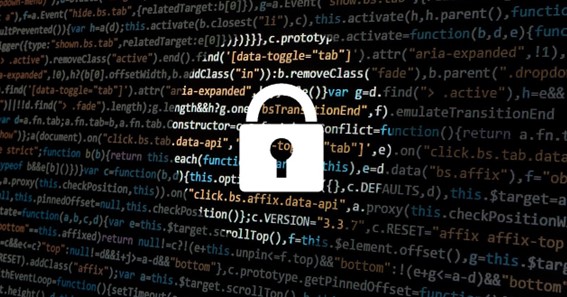Cyberattacks are on the rise, so businesses must design effective ways to combat them. Experts looking to invest in cybersecurity are now considering the Security-as-a-Service market, which is projected to gain more popularity by 2025.
SECaaS is an excellent cybersecurity approach that is transforming the way businesses protect their network systems and the data at large. Through this approach, businesses can subscribe to receive security services through cloud provider hosting. Let’s cover important details about SECaaS.
Categories of SECaaS offerings
Cybercriminals are always coming up with innovative ways to attack businesses and manipulate data. This has caused SECaaS companies to design innovative ways to protect companies against various forms of cyberattacks.
One of the common offerings is email security. Attackers use phishing, malware, and spam, to disrupt email accounts and communications. The security software identifies and stops email and instant messaging attacks using data encryption and other cybersecurity technologies.
Another offering is Identity and Access Management (IAM). Many organizations allow specific users to access different systems, but managing user identity in these systems remains a challenge. IAM software combines authorization and user authentication to manage access to the systems.
SECaaS also offers security assessment and vulnerability scanning. Businesses must have ongoing security assessments because cybercriminals always try to find new ways to penetrate systems. Security assessment software gives businesses in-depth information about their security environment while allowing them to identify security gaps.
An entity can use vulnerability scanning software to detect any weaknesses in the way it has secured its systems, apps, and networks. This software becomes part of a security assessment.
SECaaS also offers Security Information and Event Management (SIEM). Businesses can easily collect and manage security logs, but they will face the challenge of getting insights into the logs. SIEM facilitates log management and monitoring by collecting and aggregating log details across a business.
Why are businesses using Security-as-a-Service?
Companies are taking SECaaS seriously, and this has provided it the impetus, and it’s now estimated to be a $19 billion market by 2025. Large companies such as Google use SECaaS to protect their data center floors. Using SECaaS allows businesses to work with the most updated and latest security tools. For antivirus software to be useful and effective, it must work with the best definitions of computer viruses and allow businesses to stop the threats.
With SECaaS, business owners don’t have to worry about the users failing to update their antivirus software or maintain the spam filters. Besides working with updated security systems, SECaaS comes with other advantages such as:
- Comprehensive support. Information systems security experts and other users can reach out to SECaaS companies when they have any concerns and questions.
- Advanced management. The management dashboards of security companies plug guesswork out of the equation. They allow IT professionals to administer and manage security processes in the company.
- Quick provisioning. Deploying SECaaS takes less time, and it also allows businesses to scale their operations as they grow.
- Increased productivity. Businesses can use SECaaS companies to guard their systems against cyberattacks instead of letting their IT staff handle security matters. This gives the staff some free time to focus on other important activities, leading to improved productivity.
Key SECaaS security risks
There are a number of SECaaS security risks every customer and service provider needs to know. One of the top risks is access management. The client data and that of SECaaS applications are stored with a third party, so it is important to ensure single-point access to user systems. The cloud infrastructure should not result in data exposure.
Business owners must understand the information systems security procedures that have been put in place by the security company. Some security risks related to access, such as DDoS attacks, may be politically charged, but the security provider should help clients to prevent future troubles.
Another security risk is misconfigurations that occur when businesses fail to take proper measures to secure the cloud. This compromises data security which can happen from the customer’s and the service provider’s end. Sophisticated hierarchies in the service provider’s systems offer a larger venue for misconfigurations to happen. This can result in ransomware, phishing attacks, and malware leading to unauthorized access to data.
Businesses should not also overlook the issue of disaster recovery. They should always inquire about the systems that have been put in place to deal with incidences of natural disasters. Failure to have proper disaster recovery procedures can have a significant impact on the SECaaS customer’s application as well as their customers.
How should businesses choose a SECaaS provider?
The Security-as-a-Service market is expanding rapidly. New security companies are seeking to penetrate the market, and this presents challenges and opportunities for businesses that want to use the security services. Many providers come with exciting perks and economical pricing, leaving entities confused about whom to trust.
Businesses looking for a SECaaS provider should consider the following factors:
- Response time. Businesses should choose a SECaaS provider with the best response time. If a vendor can respond fast to an incident, the entity will be able to recover fast.
- Availability. It is important to assess the Service-legal agreement (SLA) of the service provider. The vendor must maintain their services 24/7 and clearly define how to handle outages.
- Disaster recovery planning. The best SECaaS provider must understand how vulnerabilities work and how they affect businesses. The vendor should collaborate with the company to establish how to safeguard the systems against dangers.
- Total ownership cost. Businesses should review the terms of the service provider’s agreement. Failure to do that may make a company miss some important information that could force the business to pay more than they expected.
- Compliance. Organizations in the health care and financial services sectors must comply with the laid down systems security mandates. Such organizations should only consider security service providers that are compliant with these requirements.
Conclusion
Security as a Service is becoming a popular option in small, medium and large businesses. This is driven by limited security resources such as qualified professionals, skills, and tools, as well as exposure to security threats. For many businesses, outsourcing systems security is a more realistic and cost-effective investment to consider.







